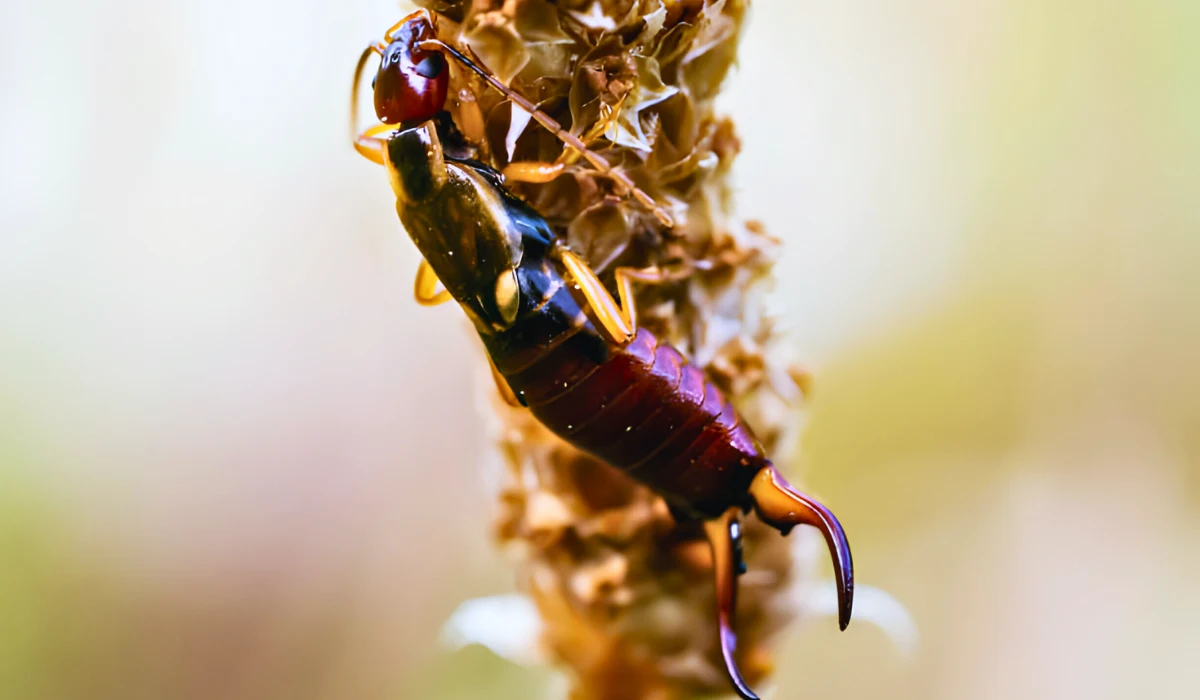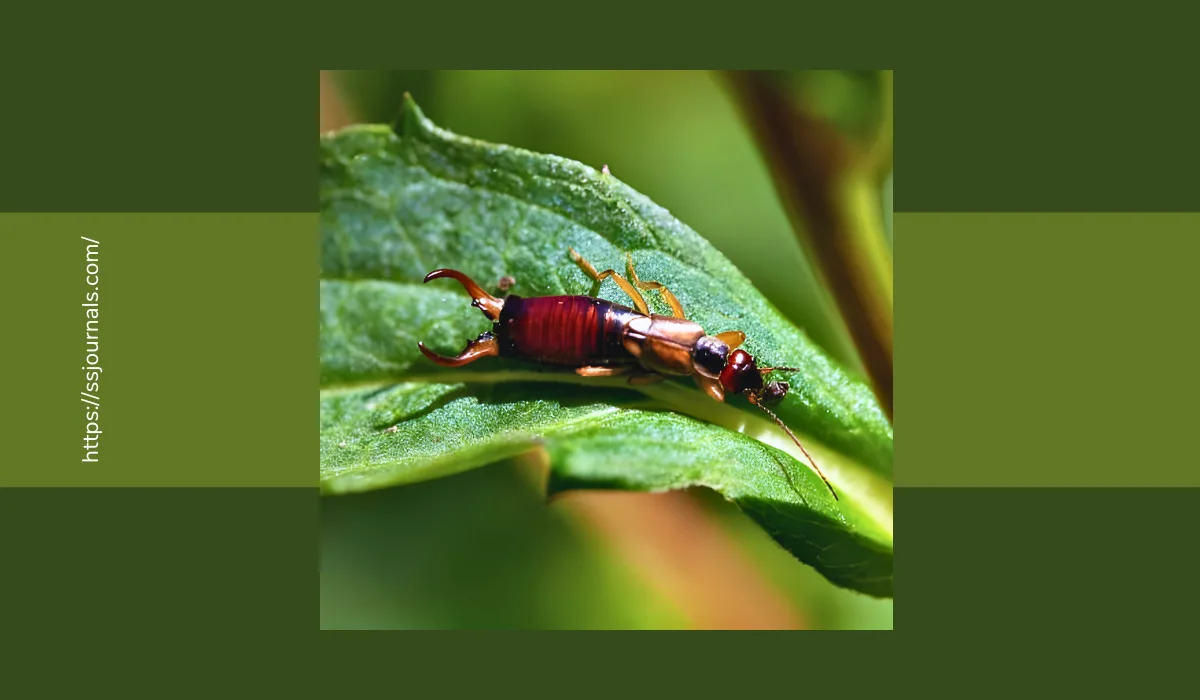Lots of people wonder if the pinching pincers on earwigs can hurt them. Earwigs are odd little insects with tails that look like extra legs. They got their name from a myth that they crawl into people’s ears! But is this myth about the dangers of earwigs true? Let’s find out.
What Are Earwigs?
Earwigs are small, brown insects about a half-inch long. They are native to Europe but live all over the world now. Earwigs hide in moist, dark places and feed on decaying plants and animals. They come out at night to hunt for food. During the day, earwigs tuck their pincer-like tails under their bodies.

Why Do Earwigs Have Pincers?
The strange tails that look like pincers are not for attacking humans—they are for defense and mating! Female earwigs use their pincers to protect their eggs from predators.
Male earwigs use their pincers to impress females during mating by showing how strong they are. The pincers also help earwigs fold up their wings neatly against their bodies.
Can Earwigs Bite Humans?
Earwigs can pinch with their tail pincers if they feel threatened. But don’t worry, although it may pinch, an earwig bite is harmless to humans. Their pincers are not strong enough to break human skin.
Some people may have a minor allergic reaction that causes redness or swelling from the pinch. Make sure to wash the area thoroughly with soap and water if this happens.
Earwigs Do Not Inject Poison
While the pincers may seem scary, earwigs do not inject any poison when they pinch. So although it may hurt a little, earwig pinchs do not spread toxins and are not dangerous. Their pincers work more like tiny tweezers rather than the venomous stingers of wasps or bees.
Comparing Earwigs Pinch to Bee and Wasp Stings
Since their pincers resemble stingers, some people worry earwig bites could be as painful as bee or wasp stings. But bees and wasps inject toxic venom when they sting, while earwigs do not.
Honey bees have a barbed stinger that gets stuck in the skin, injecting venom from a poisonous gland with each sting. Paper wasps have smooth stingers they can sting repeatedly with.
Their venom both stings and delivers toxins. Red fire ants latch on with powerful jaws, stinging and injecting painful venom as well. Multiple fire ant stings can create severe reactions.
Earwigs, however, do not have stingers or venom glands. Their muscular pincers are designed for grasping, not stabbing. At worst, the pincers can pinch slightly in self-defense. But they cannot puncture human skin or transmit poison like true stinging insects can.
So while painful, bee, wasp, and ant stings pose much higher health risks overall than defensive bites from earwigs and their pincers. The stings should always be treated seriously with proper first aid. Earwig bites may hurt briefly but do not require medical attention.
Also Read: Turmeric Oil: Proven Benefits And Uses In 2024
Earwig Pins Are Weaker Than Ant Bites
Ants and other insects bite harder than earwigs! Fire ants have very powerful mandibles and a toxic venom sting that is much more painful than an earwig pinch.
Carpenter ants also have strong jaws and spray formic acid for defense. So earwigs’ little nippers are no match for aggressive ant bites. Their pinches are more surprising than damaging.
Earwigs in Folklore and Myth
In addition to the myth that earwigs crawl into human ears, these insects have appeared in folk tales across many cultures. Ancient Greeks believed earwigs made their nests inside the brains of the dead.
A legend in the Philippines tells of a girl punished by being turned into an earwig by the god of the underworld. In Japan, supernatural earwigs the size of cats were said to foretell future events and reveal secrets if captured.
Earwigs even play a part in African and Australian Aboriginal dreamtime stories of creation. In art and jewelry, they represented the maternal care and wisdom of goddess figures. Their impressive pincers symbolized strength, virility, and courage for ancient warriors.
In medieval Europe, earwigs were used in folk medicine despite their creepy appearance. Dried earwigs worn in pouches around the neck were said to ward off disease and evil spirits. Powdered earwigs mixed into tonics or teas are claimed to cure infections, bites, stings, and even poisoning.
Of course, we now know earwigs do not predict the future or cure ailments. But these myths and legends demonstrate how earwigs have sparked fascination and imagination across human history. Even as we study how harmless earwig bites truly are, some magical lore still surrounds them.
Preventing Earwig Encounters
To avoid getting pinched, be careful when moving flowerpots, yard debris, and wood piles where earwigs nest. Always wear gloves when gardening. Make sure window seals are tight so the bugs cannot crawl inside.
If you do find earwigs in your home, use a vacuum hose to safely suck them up without getting pinched. The vacuum bag or canister should then be sealed tightly before disposal.
Treating Earwig Pinches
If an earwig does get scared enough to pinch in defense, the small wound should be washed carefully with mild soap and water. A cold pack can help reduce swelling or irritation. Over-the-counter hydrocortisone cream and oral antihistamines can relieve minor allergic reactions.
Also Read: Lewy Body Dementia: Understanding The 7 Stages
Conclusion: Earwigs Are Harmless To Humans
While startling, earwigs do not pose serious health risks to people. Their pincers help them survive in nature but are not strong enough to break human skin or inject venom. At worst, an earwig pinch may leave a tiny, harmless mark. So rest assured— earwig bites are not dangerous! With some simple precautions, we can coexist peacefully with these harmless little pinchers.

